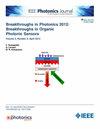Deep Neural Network-Based Detection of Modulated Jamming in Free-Space Optical Systems: Theory and Performance Under Atmospheric Fading
IF 2.4
4区 工程技术
Q3 ENGINEERING, ELECTRICAL & ELECTRONIC
引用次数: 0
Abstract
Free-space optical (FSO) communication systems, though advantageous in terms of bandwidth and security, are highly susceptible to deliberate jamming attacks, particularly under intensity modulation and direct detection (IM/DD) constraints. This paper investigates the problem of detecting structured optical jamming introduced via a separate FSO link, where both legitimate and adversarial transmissions undergo independent Gamma-Gamma fading. We propose a deep neural network (DNN)-based binary classifier designed to discriminate between clean and jammed received frames. The DNN operates on a composite feature vector comprising raw signal samples, spectral content, energy statistics, and higher-order distributional descriptors, enabling robust detection under both modulated and persistent jamming scenarios. To benchmark the performance of the proposed architecture, we derive a closed-form upper bound on the Bayes classification error using the Bhattacharyya coefficient, expressed analytically in terms of Meijer-G functions. This bound reveals how key system parameters—including jammer power, noise variance, signal dimension, and turbulence severity—jointly influence detectability. Monte Carlo simulations are used to evaluate the DNN’s performance under varying noise, fading, and jamming conditions. Results show that the proposed model approaches the theoretical limit at moderate dimensions, low noise, and high jammer power, while generalization performance is constrained at large dimensions by data sparsity and architectural capacity. The combination of theoretical bounds and feature-informed DNN design offers a principled framework for jamming detection in realistic FSO environments.基于深度神经网络的自由空间光学系统调制干扰检测:大气衰落下的理论与性能
自由空间光(FSO)通信系统虽然在带宽和安全性方面具有优势,但极易受到故意干扰攻击,特别是在强度调制和直接检测(IM/DD)约束下。本文研究了通过单独的FSO链路引入的结构化光干扰检测问题,其中合法和对抗性传输都经历独立的Gamma-Gamma衰落。我们提出了一种基于深度神经网络(DNN)的二元分类器,旨在区分干净和阻塞的接收帧。DNN在包含原始信号样本、频谱含量、能量统计和高阶分布描述符的复合特征向量上运行,能够在调制和持续干扰情况下实现鲁棒检测。为了对所提出的体系结构的性能进行基准测试,我们使用Bhattacharyya系数推导出Bayes分类误差的封闭上界,该系数用Meijer-G函数解析表示。这一界限揭示了关键系统参数——包括干扰机功率、噪声方差、信号维度和湍流严重程度——如何共同影响可探测性。蒙特卡罗模拟用于评估DNN在不同噪声、衰落和干扰条件下的性能。结果表明,该模型在中等维数、低噪声和高干扰功率时接近理论极限,而在大维数时泛化性能受到数据稀疏性和体系结构容量的限制。理论边界和特征通知深度神经网络设计的结合为现实FSO环境中的干扰检测提供了一个原则性框架。
本文章由计算机程序翻译,如有差异,请以英文原文为准。
求助全文
约1分钟内获得全文
求助全文
来源期刊

IEEE Photonics Journal
ENGINEERING, ELECTRICAL & ELECTRONIC-OPTICS
CiteScore
4.50
自引率
8.30%
发文量
489
审稿时长
1.4 months
期刊介绍:
Breakthroughs in the generation of light and in its control and utilization have given rise to the field of Photonics, a rapidly expanding area of science and technology with major technological and economic impact. Photonics integrates quantum electronics and optics to accelerate progress in the generation of novel photon sources and in their utilization in emerging applications at the micro and nano scales spanning from the far-infrared/THz to the x-ray region of the electromagnetic spectrum. IEEE Photonics Journal is an online-only journal dedicated to the rapid disclosure of top-quality peer-reviewed research at the forefront of all areas of photonics. Contributions addressing issues ranging from fundamental understanding to emerging technologies and applications are within the scope of the Journal. The Journal includes topics in: Photon sources from far infrared to X-rays, Photonics materials and engineered photonic structures, Integrated optics and optoelectronic, Ultrafast, attosecond, high field and short wavelength photonics, Biophotonics, including DNA photonics, Nanophotonics, Magnetophotonics, Fundamentals of light propagation and interaction; nonlinear effects, Optical data storage, Fiber optics and optical communications devices, systems, and technologies, Micro Opto Electro Mechanical Systems (MOEMS), Microwave photonics, Optical Sensors.
 求助内容:
求助内容: 应助结果提醒方式:
应助结果提醒方式:


